Tuul River Basin Report Card 2019

Ulaanbataar, Mongolia. On 22 March 2019, the Tuul River Basin Report Card was released in Ulaanbaatar, Mongolia, with over 300 people attending the release event. Begun in 2017, this project was a partnership between IAN, the Tuul River Basin Authority, WWF-Mongolia, WWF-USA and Asian Development Bank. The IAN team involved in this truly memorable project included Simon Costanzo, Bill Dennison, and Dylan Taillie. Outcomes from the project include specific recommendations on improving water management within the basin, infrastructure upgrades and air pollution control measures.
Annapolis, MD
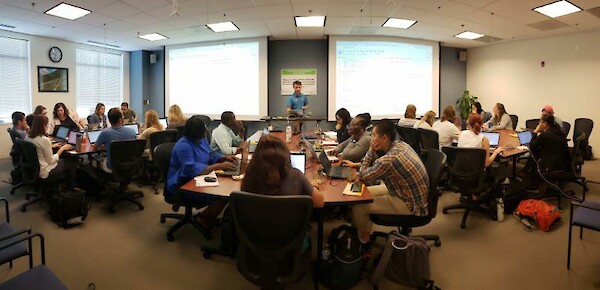
IAN team members Dylan, Katie May, and Vanessa recently attended a week-long workshop at SESYNC called Summer Institute on Cyberinfrastructure. The workshop helped to improve their data gathering, interpreting and visualization skills. They were able to hone their coding skills and advance their understanding of social and ecological data systems.
IAN projects become journal publications!
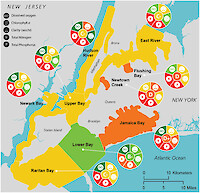
IAN staff published journal papers. Dylan Taillie and Dr. Bill Dennison collaborated with Dr. Judy O’Neil of Horn Point Laboratory to release an assessment of the water quality within the New York Harbor estuarine system. Read about gradients and trends in New York Harbor water quality here. A second publication that described three ecosystem health report cards as case studies, focusing on the various challenges presented by each case and outlining IAN's process of integration for report card production, was authored by Katie May Laumann, Emily Nastase, Vanessa Vargas-Nguyen, Heath Kelsey, Annie Carew, Caroline Donovan, Alex Fries, Suzi Spitzer, and Bill Dennison.
Annual Chesapeake Watershed Forum in Shepherdstown, WV.

IAN was well represented at this year's Chesapeake Watershed Forum. Caroline Donovan, Dylan Taillie, Sky Swanson, Suzi Spitzer, and Nathan Miller presented on IAN-led or IAN-supported initiatives throughout the Chesapeake Watershed. Suzi and Dylan presented posters on their respective graduate research; Nathan presented during a Chesapeake Monitoring Cooperative session about data management and interpretation; and Caroline, Dylan, and Sky hosted a session working with stakeholders for the UMCES Chesapeake Bay Report Card to expand the report card with social, cultural, and economic indicators.
Fact sheet on nutrient trends in the Chesapeake now available
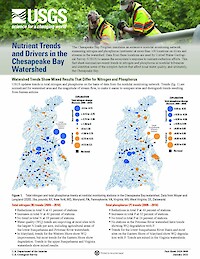
The US Geological Survey and IAN have collaborated to release a one-page fact sheet, Nutrient Trends and Drives in the Chesapeake Bay. The fact sheet quantifies trends and drivers in nutrient loading throughout the Chesapeake Bay Watershed and provides visualizations. This will help high-level managers and policymakers understand the complex processed that drive water quality, informing efforts to have nutrient reduction practices in place by 2025. You can view the full fact sheet here, or check out our short videos (Part 1, Part 2) that explain the main findings.
Congratulations, Dylan!
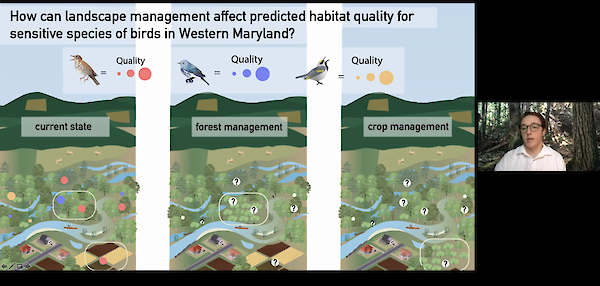
IAN science communicator Dylan Taillie is finishing his Master's degree at UMCES this year. On November 30, Dylan defended his thesis, which examined the effects of landscape management strategies on songbird habitat quality in western Maryland. Dylan has been with IAN and UMCES in various capacities since 2015. Unsurprisingly, his thesis presentation was filled with killer graphics. Great work, Dylan!
Tuul River Report Card
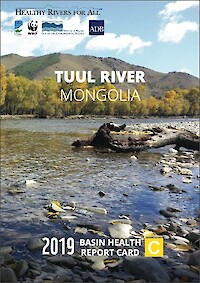
We worked with our partners at WWF to produce the first-ever Tuul River Report Card in Mongolia. The river received a grade of C for 2019.
Check out our new website!
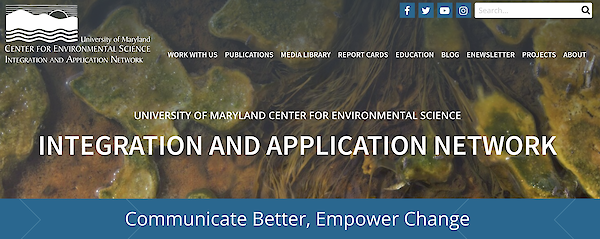
We are happy to announce the launch of our brand-new website at ian.umces.edu
The new website has functions to search our symbol and image libraries and peruse all of our publications, projects, and staff profiles. Check it out!
Teaching summer scicomm courses

This month, some of our science communicators (aka scicommers) taught multiple virtual classes to summer interns at IMET and Maryland Sea Grant. Each course consisted of two sessions focused on the basics of scicomm, principles of design, and an introduction to Adobe Creative software.
We like to emphasize the importance of science as storytelling. No matter your system, experiment, or situation, there is an intrinsic narrative that you can use to make your science engaging to any audience. Finding the narrative, and tailoring it to your audience, is the basis of good science communication. We use tools like ABT statements (And, But, Therefore) and conceptual diagrams to communicate science to a variety of audiences, and it is always enjoyable for us to pass on those skills to younger scientists.
We thoroughly enjoyed our students this summer, and we wish them luck in the rest of their internships!
Now available: USGS Chesapeake Science Strategy 2021–2025

The Chesapeake Bay ecosystem is a national treasure that provides almost $100 billion annually of goods and services. The Chesapeake Bay Program (CBP), is one of the largest federal-state restoration partnerships in the United States and is underpinned by rigorous science. The U.S. Geological Survey (USGS) has a pivotal role as a science provider for assessing ecosystem condition and response in the Chesapeake watershed. Despite significant CBP accomplishments, the pressures of climate change and competing demands on land use and change require an acceleration of progress towards the 10 goals in the Chesapeake Bay Watershed Agreement. USGS Chesapeake studies are increasing efforts to provide integrated science and are engaging stakeholders to inform the multi-faceted restoration and conservation decisions to improve habitat for fish and waterfowl, and socio-economic benefits to the 18 million people living in the watershed.
Darwin Harbour Integrated Report Card now available
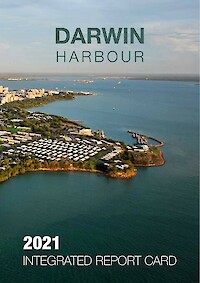
The Darwin Harbour Integrated Report Card was released on October 12. This report card has been developed through extensive consultation with stakeholders from the Darwin Harbour region and relies heavily on their knowledge and expertise.
Initiated by the Darwin Harbour Advisory Committee, a series of workshops were held in March 2020, representing the first step in this report card journey. Stakeholders from government, Indigenous communities, industry, academia and non-government organisations gathered in and around Darwin Harbour to conceptualise the harbour and its catchment, identify the environmental, social, Indigenous cultural and economic values of the region, and discuss indicators and thresholds that could be used to assess these values.
A total of 12 values were identified from these workshops and numerous potential indicators were proposed. The final choice of indicators used in this inaugural report card were ultimately dictated by data suitability and availability. In some instances, no data were available to confidently assess the health of certain values. In August 2021, report card findings were presented back to the stakeholders for their review and input.

